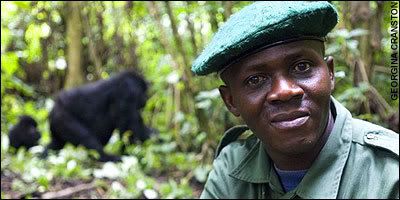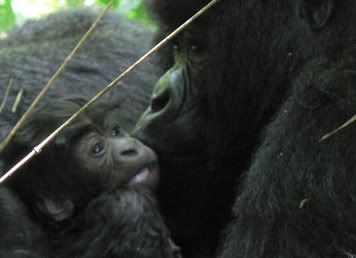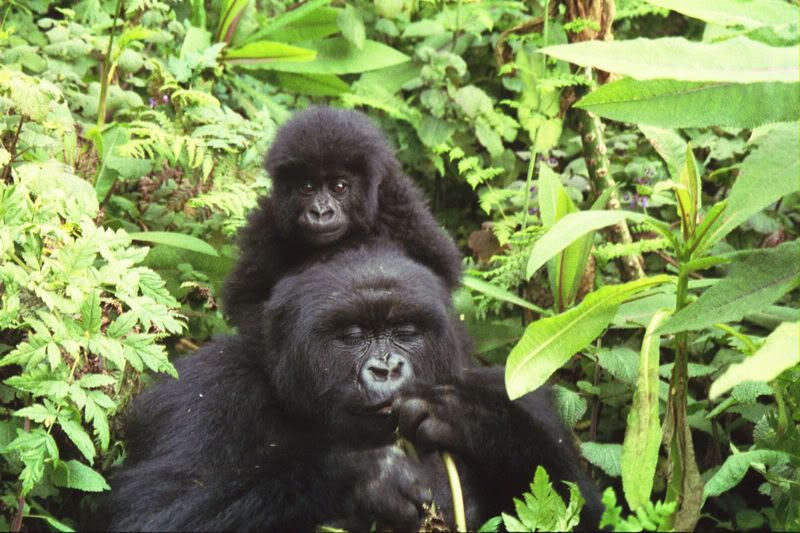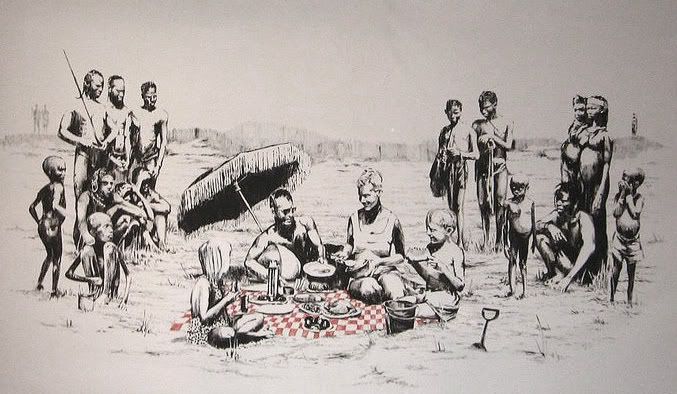Sexual equality, double standards and social scale

In my article Eye of the Beholder I described the latest study demonstrating that women tend to be most likely to cheat on their partners in heterosexual relationships when they’re at the most fertile phase of their menstrual cycle.
In response Paul asked the question:
As you point out, these findings are consistent with the well supported notion that women (along with men) evolved more than one reproductive strategy. What puzzles me is why societies are more forgiving of the male who "cheats" than of the female who "cheats" -- a double standard that seems almost ubiquitous?
This double standard has not only been ubiquitous, it has been downright murderous in its application throughout history. However, this is not the case in every society. There is something very specific about which societies consistently demonstrate this double standard and which don’t.
In many indigenous societies sexuality is considered a healthy activity and marriage is a flexible social arrangement that can be initiated or terminated by either sex. For example, among the Vanatinai people of the New Guinea Highlands, Lepowsky (1990:190) writes “sexual activity is regarded as a pleasurable activity appropriate for men and women from adolescence to old age.” Divorce may be initiated by either husband or wife, and is most frequently the result of laziness on the part of the husband or because of the wife’s infidelity. However, infidelity is apparently common enough that Vanatinai marriage rules make any children born to outside fathers the husband’s kin.
This is mirrored among the Australian Aborigines of the Darwin Hinterland. Sansom (1978:100) found that “marriage does not stand for the containment of sexuality within the relationship. It is expected that all husbands and all wives will want lovers.” However, an infidelity that becomes too serious and involves economic favors can frequently lead to bitter argument or divorce.
 Yanomami Woman. In many indigenous societies women's sexuality
Yanomami Woman. In many indigenous societies women's sexuality
is not controlled based on male interest.Even among the Yanomamo, a group regarded as the definitive example of a traditional society in which a man’s dominance status correlates with his reproductive success (high ranking men have multiple wives, low ranking men are bachelors), the picture is not as clear as some would like to believe. Anthropologist John Peters contacted the Shirishana Yanomana during a period when there was a shortage of women and found there were nine polyandrous marriages (one woman with several men) and five monogamous ones (Peters & Hunt 1975).
This flexibility of monogamy and the sexual freedom among many indigenous women today was likely a condition for indigenous groups in the past. As demonstrated by the Montagnais of Northeastern Canada in the 1600s, French Jesuit Paul le Jeune reported with consternation that:
“The inconstancy of marriages and the facility with which they divorce each other, are a great obstacle to the Faith of Jesus Christ. We do not dare baptize the young people because experience teaches us that the custom of abandoning a disagreeable wife or husband has a strong hold on them” (Leacock 1981:50).
Likewise, polygamy (marriage to many partners) was another right that women and men took for granted and which the Jesuits weren’t able to convince the Montagnais to abandon. Perhaps the most telling difference between the sexual standards of indigenous and Western societies came when a Montagnais man objected to le Jeune’s preaching. According to le Jeune:
“I told him that it was not honorable for a woman to love any one else except her husband, and that this evil being among them, he himself was not sure that his son, who was there present, was his son. He replied, 'Thou hast no sense. You French people love only your own children; but we all love all the children of our tribe.'"
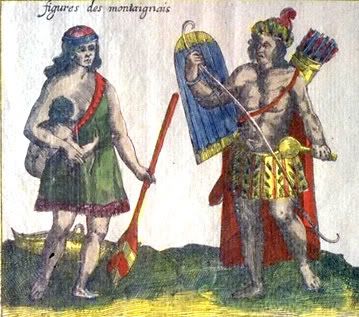 The Montagnais of Northeastern Canada demonstrated greater sexual
The Montagnais of Northeastern Canada demonstrated greater sexual
equality as reported by missionary Paul le Jeune in the 1600s.In contrast to tribal societies, the rise of states and the development of religious law initiated a starkly different vision for women’s sexual choices. Judaism, Christianity, Islam and Hinduism each share a fundamental concern over the punishment for a woman’s sexual freedom. Whereas any “man that committeth adultery with another man’s wife [both] the adulterer and the adulteress shall be put to death,” (
Leviticus 20:10) any unmarried woman who has sexual relations with an unmarried man shall be brought “to the door of her father’s house, and the men of her city shall stone her with stones that she die” (
Deuteronomy 22:21).
In fact, the only sexual relationship outside of marriage that does not end in death for the woman is in the case of rape. In that event, if the woman is married, “the man only that lay with her shall die” but, if she is a virgin, “the man that lay with her shall give unto the damsel’s father fifty shekels of silver, and she shall be his wife; because he hath humbled her” (
Deuteronomy 22:25-29). The main interest in all of these cases is the paternal interests of kinship and never the interests of the woman in question.
 Iranian woman symbolically protests the penalties
Iranian woman symbolically protests the penalties
imposed by Islamic law for women's sexuality, a
reality common in the history of most religions.The Bible views women as being
half as valuable as men, which is directly comparable to the Qu'ran. There are also direct parallels in punishing women's sexuality. For example, there is no punishment for men in the event of rape except under the categories of "adultery or fornication." In which case “scourge ye each one of them with a hundred stripes. And let not pity for the twain withhold you from obedience to Allah” (
Surah 24:2). However, if a married or unmarried woman is “guilty of lewdness,” which Ali (2003:189) defines as adultery or fornication, “confine them to the houses until death take them or until Allah appoint for them a way [flogging for fornication and stoning for adultery]” (
Surah 4:15).
The Manu Smriti, the most authoritative books of the Hindu code, or dharma, proscribes that “When a woman, proud of her relations or abilities deceives her husband with another man, then the king should ensure that she be torn apart by dogs in a place much frequented by people.” (
Manu VIII:371). Such punishment is necessary because “It is the nature of women to seduce men in this world; for that reason the wise are never unguarded in the company of females” (
Manu II:213). The Artharva Veda dictated that if a woman was found guilty of a carnal crime her generative organs were to be cut off and she was ultimately sentenced to death (
Arth IV:13).
This stark contrast between indigenous and state societies can be understood as power relationships between the sexes that change as the result of social scale. Anthropologist John Bodley (who I’ve had the pleasure of working with directly) wrote in his groundbreaking work
The Power of Scale that:
“The size of human societies and cultures matters because larger societies will naturally have more concentrated social power. Larger societies will be less democratic than smaller societies, and they will have an unequal distribution of risks and rewards” (Bodley 2003:54).
As I touched on in an earlier post (
The Evolution of Metapopulations and the Future of Humanity), the invention of agriculture and the subsequent choice by some societies to remain sedentary lead to the unequal accumulation of private goods and the need for a ruling elite to mediate property disputes. This ruling elite frequently identified themselves as an embodiment of the state itself (and often with divine authority). While smaller scale societies would manage any dispute or crime communally, state level societies defined all crimes as crimes against the state (for example, hunting wild deer on the King’s land would be construed as “poaching the King’s deer”).
Males of most species use their larger physical size, or sexual dimorphism, to increase their reproductive success. But females generally have opposing strategies when their reproductive interests are different. Whereas indigenous societies are often more egalitarian, early state level societies codified human sexual dimorphism into law and viewed paternity rights in the same category as property rights because inheritance was of greater concern. With the power of the state to punish any violation of the law, women were relegated to the status of chattel and their sexual choices were constrained by the threat of capital punishment. It has only been with the rise of secular democracies, and the reduction of religious authority, that women have begun to reclaim their sexual freedom. The last thirty years has seen the largest rise in women’s economic and social power in human history (mostly confined to the West). It’s not coincidental that women have also seen the greatest freedom from sexual coercion and control during this same period. There is a great deal of work that needs to be done and, at the same time, there are still
strong proponents in favor of moving backwards.

 Which culture is more guilty of imposing sexual roles on women?
Which culture is more guilty of imposing sexual roles on women?While greater female sexual equality doesn’t exist in every indigenous society, it would appear that social and environmental factors are crucial. Likewise, as
David Schmitt reviewed in his analysis of 48 countries, environmental influences such as the ratio of men to women are strong predictors of sexual dynamics (Schmitt 2005). As Schmitt also reported, most women prefer stable monogamous partnerships. Sexual equality means a woman's right to enter and leave relationships with the same freedom as men. So we shouldn't confuse sexual equality with promiscuity. One could make the argument that, whereas many women in the Middle East and North Africa are subject to one form of patriarchal control and denied sexual equality, women in the West are subject to another form and are made to feel like they must be sexual objects for male gratification.
So, I would argue, the double standard we witness today is actually a cultural holdover from this long tradition of patriarchy. While it may have gotten its start as the result of our evolutionary history (males being larger than females) it has been exaggerated and enforced as the result of male-dominated cultural practices. However, this condition is by no means permanent.
References:
Ali, A.Y. (2003).
The Meaning of the Holy Qur’an. Amana Publications, Beltsville, Maryland.
Bodley, J.H. (2003).
The Power of Scale: A Global History Approach. M.E. Sharpe. New York.
Leacock, E. (1981).
Myths of Male Dominance. New York: Monthly Review Press.
Lepowsky, M. (1990). Gender in an egalitarian society: a case study from the coral sea. In
Beyond the Second Sex: New Directions in Anthropology of Gender. Sanday, P.R. & Goodenough, R.G. (eds). University of Pennsylvania Press, Philadelphia.
Peters, J.F. & Hunt, C.L. (1975). Polyandry among the Yanomana Shirishana.
Journal of Comparative Family Studies 6:197–207.
Sansom, B. (1978). ‘Sex, age, and social control in mobs of the Darwin hinterland’, in J.S. La Fontaine (ed.),
Sex and Age as Principles of Social Differentiation, Academic Press, London.
Schmitt, D. (2005). Sociosexuality from Argentina to Zimbabwe: A 48-nation study of sex, culture, and strategies of human mating.
Behavioral and Brain Sciences 28:247-311.
 [Read more →]
[Read more →]




